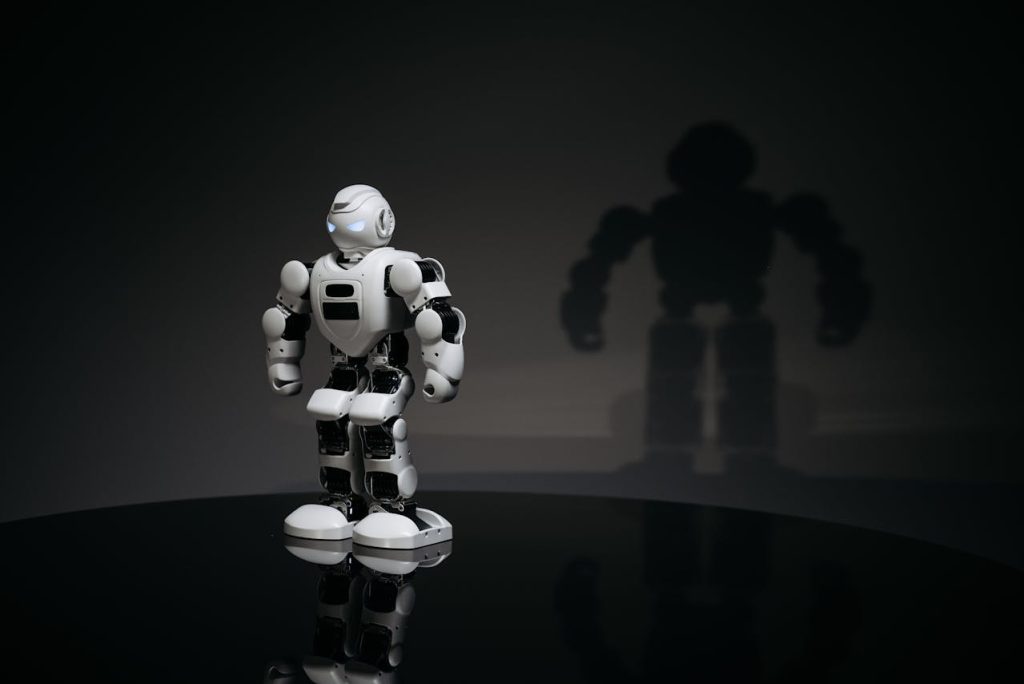
Introduction
Generative AI has rapidly emerged as one of the most transformative technologies of our time. From creating art and writing content to analyzing business data and automating complex tasks, AI tools are changing how we work and create. What seemed like science fiction just a few years ago is now accessible to anyone with an internet connection.
This technology isn’t just a trend—it’s fundamentally reshaping industries, opening new possibilities, and challenging traditional ways of doing things. Whether you’re a business owner, creative professional, or simply curious about technology, understanding generative AI and its applications is becoming increasingly important.
In this blog, we’ll explore how generative AI is impacting both business operations and creative industries, share practical insights, and discuss what this means for the future of work and creativity.
What is Generative AI?
Generative AI refers to artificial intelligence systems that can create new content, including text, images, music, code, and more. Unlike traditional AI that analyzes and categorizes existing data, generative AI produces original outputs based on patterns it has learned from vast amounts of training data.
Popular examples include ChatGPT for text generation, DALL-E and Midjourney for image creation, and various AI tools for music composition, video editing, and code writing. These tools use complex algorithms and neural networks to understand context, style, and structure, then generate new content that matches specific requirements.
The key difference from previous technology is that generative AI doesn’t just follow rigid rules—it learns patterns and can adapt to create contextually appropriate, often surprisingly creative outputs.
Generative AI in Business
Enhanced Productivity and Efficiency
Businesses are using generative AI to automate routine tasks that previously required significant human time. This includes generating reports, drafting emails, creating presentations, and analyzing data. By handling repetitive work, AI allows employees to focus on strategic thinking and complex problem-solving.
Customer Service and Support
AI-powered chatbots and virtual assistants are transforming customer service. They can handle multiple inquiries simultaneously, provide instant responses 24/7, and resolve common issues without human intervention. This improves customer satisfaction while reducing operational costs.
Content Marketing and Copywriting
Marketing teams are leveraging AI to generate blog posts, social media content, product descriptions, and advertising copy. While human oversight remains essential, AI significantly speeds up the content creation process and helps maintain consistent output across channels.
Data Analysis and Insights
Generative AI can process massive datasets and generate comprehensive reports with actionable insights. Businesses use this for market research, trend analysis, financial forecasting, and strategic planning. AI can identify patterns humans might miss and present findings in easily understandable formats.
Product Development and Innovation
Companies are using AI to assist in designing new products, testing concepts, and even generating code for software development. This accelerates innovation cycles and allows businesses to experiment with more ideas in less time.
Personalization at Scale
AI enables businesses to create personalized experiences for individual customers without manual effort. This includes customized product recommendations, targeted marketing messages, and tailored user interfaces that adapt to individual preferences.
Generative AI in Creative Fields
Visual Arts and Design
Artists and designers are using AI tools to generate images, create concept art, design logos, and explore visual styles. While some see this as controversial, many creatives use AI as a collaborative tool—generating initial concepts, exploring variations, or handling technical aspects while they focus on artistic direction.
Writing and Content Creation
Writers are using AI for brainstorming ideas, drafting outlines, overcoming writer’s block, and editing content. Some use it to generate first drafts that they then refine and personalize. The technology is particularly useful for creating variations of content or adapting writing for different audiences.
Music and Audio Production
AI tools can now compose music, generate sound effects, and even create voice narrations. Musicians use these tools for inspiration, creating backing tracks, or experimenting with styles they’re less familiar with. Audio producers use AI for tasks like noise reduction and audio enhancement.
Video Production and Animation
Video creators are leveraging AI for tasks like video editing, color grading, generating B-roll footage, and creating animations. AI can significantly reduce the time needed for technical tasks, allowing creators to focus more on storytelling and creative vision.
Game Development
Game developers use generative AI to create textures, generate dialogue, design levels, and even create entire game assets. This is particularly valuable for indie developers who may not have large teams or budgets.
Fashion and Product Design
Fashion designers and product developers are using AI to generate design concepts, predict trends, and visualize products before physical prototypes are made. This speeds up the design process and reduces costs associated with physical sampling.
The Benefits We’ve Observed
Accessibility
Generative AI has democratized creative and technical capabilities. People without formal training in design, writing, or coding can now create professional-quality work with AI assistance. This lowers barriers to entry across various fields.
Speed and Efficiency
Tasks that once took hours or days can now be completed in minutes. This increased speed allows for more experimentation, faster iteration, and quicker time-to-market for products and content.
Cost Reduction
For businesses and individuals, AI tools often cost significantly less than hiring specialists for every task. Small businesses and solopreneurs can access capabilities that were previously only available to larger organizations.
Inspiration and Exploration
Many creatives find AI valuable for exploring new ideas and breaking out of creative ruts. The unexpected outputs AI generates can spark inspiration and lead to directions they might not have considered otherwise.
Important Considerations
Quality Control is Essential
AI-generated content requires human review and refinement. While AI is impressive, it can produce errors, inconsistencies, or inappropriate content. Human judgment remains crucial for ensuring quality and appropriateness.
Ethical and Legal Questions
The use of AI raises questions about copyright, attribution, and the rights of original creators whose work may be in AI training data. These issues are still being debated and will likely evolve as regulations develop.
Learning and Skill Development
While AI is a powerful tool, developing fundamental skills in your field remains important. AI works best when guided by someone who understands the domain and can evaluate and refine its outputs.
Job Market Changes
AI is changing job requirements and roles across industries. Some tasks are being automated, but new opportunities are also emerging for people who can effectively work with AI tools. Adaptation and continuous learning are becoming increasingly important.
Authenticity and Human Touch
In creative fields especially, audiences often value authentic human expression and unique perspectives. AI should enhance rather than replace the human element that makes creative work meaningful and relatable.
The Future

Generative AI technology continues to evolve rapidly. We’re likely to see even more sophisticated tools that better understand context, maintain consistency across projects, and collaborate more naturally with human users.
Rather than replacing human workers and creators, the most probable future involves AI as a collaborative tool that augments human capabilities. Success will likely belong to those who learn to effectively combine human creativity, judgment, and emotional intelligence with AI’s speed and analytical capabilities.
Industries will continue adapting, new roles will emerge, and the skills valued in the workplace will shift. Staying informed about AI developments and learning to work with these tools will be increasingly valuable regardless of your field.
Conclusion
Generative AI represents a significant shift in how we approach work and creativity. It offers tremendous opportunities for increased productivity, creative exploration, and innovation across business and creative fields. However, it also requires thoughtful implementation, ethical consideration, and ongoing human guidance.
The technology is neither a magic solution nor a threat to replace human capabilities entirely. Instead, it’s a powerful tool that works best when combined with human expertise, creativity, and judgment. Those who learn to leverage AI effectively while maintaining their unique human perspectives will be well-positioned for success.
Whether you’re running a business or pursuing creative work, exploring how generative AI might enhance your processes is worth your time. Start small, experiment with available tools, and find ways to integrate AI that align with your goals and values. The technology is here to stay, and learning to work with it effectively is becoming an essential skill.
Disclaimer
We’re not certified AI experts or professional tech consultants, but we’ve been exploring and working with generative AI tools extensively. We wanted to share our observations and experiences with how this technology is impacting various fields. Everyone’s experience with AI will be different, and we encourage you to explore and form your own perspectives.
All pictures used in this blog are from free resources, and we have given proper credit to the original creators. We respect intellectual property and believe in supporting the creative community.
FAQs
Q : Will AI replace human workers in creative and business fields?
Ans : AI is more likely to change job roles rather than completely replace humans. While some routine tasks may be automated, AI currently lacks human creativity, emotional intelligence, strategic thinking, and contextual understanding. The most valuable professionals will be those who can effectively combine their human skills with AI capabilities. New job opportunities are also emerging specifically around AI implementation and management.
Q : Do I need technical skills to use generative AI tools?
Ans : Most modern generative AI tools are designed to be user-friendly and don’t require coding or technical expertise. Tools like ChatGPT, Midjourney, and various AI writing assistants have simple interfaces. However, learning to write effective prompts and understanding how to guide AI toward desired outputs does require practice and some learning.
Q : Is content created by AI considered original?
Ans : This is a complex and evolving question. AI generates new combinations and variations based on patterns from training data, but legal and ethical questions about originality and copyright are still being resolved. Many jurisdictions are still developing regulations around AI generated content. It’s best to view AI as a tool that assists creation rather than the sole creator, and to add human input and refinement to any AI outcomes.
Q : How much does it cost to use generative AI tools?
Ans : Costs vary widely. Some tools offer free tiers with limited usage, while others require subscriptions ranging from around $10 to $100+ per month depending on features and usage limits. Many businesses find the costs reasonable compared to traditional methods. Free alternatives exist for most types of AI tools if you’re just starting to explore.
Q : Can AI maintain brand voice and consistency?
Ans : With proper guidance and training, AI can learn to approximate specific brand voices and maintain consistency across content. However, this requires clear instructions, examples, and ongoing refinement. Many businesses use AI to generate drafts that are then edited by humans to ensure complete alignment with brand standards.
Q : What are the main limitations of current generative AI?
Ans : Current AI can produce factual errors, struggle with very recent information, sometimes generate biased content, lack true understanding of context, and cannot match human emotional intelligence or creative intuition. AI also struggles with highly specialized or niche topics and may produce generic outputs without specific guidance. These limitations make human oversight essential.
Q : How can I start learning to use generative AI effectively?
Ans : Start by trying free or low-cost AI tools relevant to your field. Experiment with different prompts and approaches to see what works. Many online resources, tutorials, and communities share tips for effective AI use. Focus on learning to write clear, specific prompts and how to refine AI outputs. Practice is key—the more you use these tools, the better you’ll understand their capabilities and limitations.
Q : Is my data safe when using AI tools?
Ans : Data privacy varies by tool and provider. Read privacy policies carefully before using AI tools, especially for sensitive business or personal information. Many reputable AI services have clear data policies, but some free tools may use your inputs for training. For sensitive work, consider using AI tools with strong privacy guarantees or enterprise versions designed for business use.













Leave a Reply